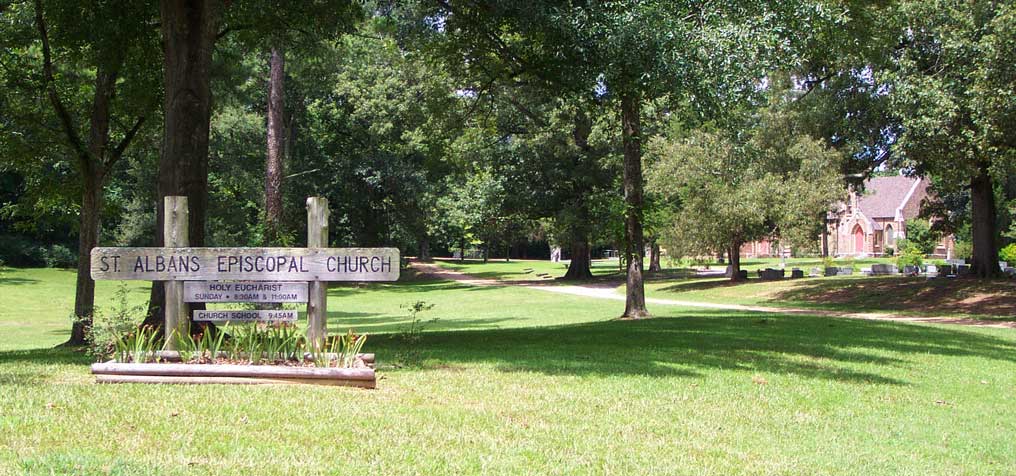
 St. Alban's Episcopal
St. Alban's Episcopal
St. Alban's Church History
Organized 1857 - 1st Church Built 1858 - 2nd Church built 1870 - 3rd Church built 1928
First Church Built in 1858
St. Alban’s Church in Bovina was well established as one of the earliest Episcopal churches in the Diocese of Mississippi. The church was organized by William Mercer Green, Mississippi’s first Episcopal bishop and James Angel Fox, who migrated from Connecticut to become one of the earliest priests in the diocese.
The church was built approximately eight miles east of Vicksburg, and largely supported by wealthy plantation owners. The location was ideal—adjacent to the Alabama-Vicksburg Railroad to the north— the Vicksburg-Jackson road to the south and the Big Black River to the east
The threat of war began as early as spring of 1862 when the Union Army began bombarding Vicksburg from the river. Fearful for their lives, citizens began fleeing to Bovina since it was thought to be a safe haven. It was not. On May 17-18, 1863, the Thirteenth Army Corps marched into Bovina and set up temporary headquarters at St. Alban’s. Grant led the way as his regiments marched along the old road, only yards from the entrance to the church.
During the Union occupation, St. Alban’s served as a field hospital for wounded soldiers, Union & Confederate, as well as the site of a prisoner exchange camp. Before the siege ended St. Alban’s church was defiled and abandoned. The Siege of Vicksburg lasted approximately fifty days before Lt. Gen. John Pemberton’s Confederate forces were compelled to surrender on July 4, 1863.
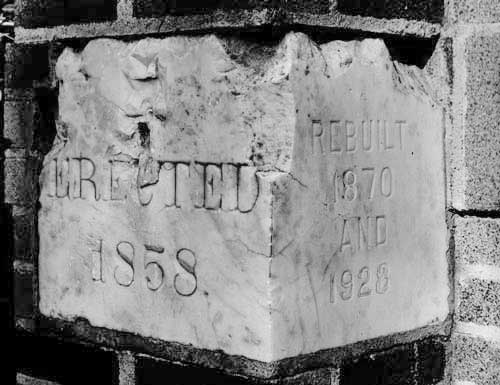 Around 1870, an anonymous first-hand report regarding the fate of St. Alban’s was published in The Pacific Churchman, a nation-wide Episcopal newsletter published in San Francisco: The winter after the war ended, I saw the ruins – church furniture and all a heap of ruins. Not a house of worship of any kind in Warren County outside of Vicksburg was left standing. St. Alban’s Church was described as being a handsome brick edifice. The soldiers first made a butcher shop of it, cutting up meat on the altar - then a dancing saloon- next a stable - and then it was thrown down.
Around 1870, an anonymous first-hand report regarding the fate of St. Alban’s was published in The Pacific Churchman, a nation-wide Episcopal newsletter published in San Francisco: The winter after the war ended, I saw the ruins – church furniture and all a heap of ruins. Not a house of worship of any kind in Warren County outside of Vicksburg was left standing. St. Alban’s Church was described as being a handsome brick edifice. The soldiers first made a butcher shop of it, cutting up meat on the altar - then a dancing saloon- next a stable - and then it was thrown down.
 Only two things worth saving were found in the ruins — shards of stained glass and the marble cornerstone thought to have been used for target practice. The shards of stained glass were saved and later made into a Rose Window that can be seen in the church today. When the second church was built in 1870, the cornerstone was put back in place and remains on the site today. During and after the Siege, church members continued to worship in various homes and churches as they struggled to regain what was lost. Rev. Fox continued to lead the church forward.
Only two things worth saving were found in the ruins — shards of stained glass and the marble cornerstone thought to have been used for target practice. The shards of stained glass were saved and later made into a Rose Window that can be seen in the church today. When the second church was built in 1870, the cornerstone was put back in place and remains on the site today. During and after the Siege, church members continued to worship in various homes and churches as they struggled to regain what was lost. Rev. Fox continued to lead the church forward.
St. Alban’s Second Church erected in 1870
Reverend James Angel Fox, Rector
 The organization and building of St. Alban’s second church was spearheaded by Rev. James Angel Fox who played a prominent role in the history of St. Alban’s. He was determined to rebuild St. Alban’s no matter how long it would take. He established a building fund and asked for donations from every available source, near and far. One of the donations ($100.00) came from St. Alban’s Episcopal Church in New York. Thanks to all who contributed to the building fund the second church was erected on the same site as the first church in 1870. Unlike the original brick church the second church was wooden and simple in design.
The organization and building of St. Alban’s second church was spearheaded by Rev. James Angel Fox who played a prominent role in the history of St. Alban’s. He was determined to rebuild St. Alban’s no matter how long it would take. He established a building fund and asked for donations from every available source, near and far. One of the donations ($100.00) came from St. Alban’s Episcopal Church in New York. Thanks to all who contributed to the building fund the second church was erected on the same site as the first church in 1870. Unlike the original brick church the second church was wooden and simple in design.
 St. Alban’s vestry invited Rev. Fox, age 76, to become St. Alban’s full-time rector. In spite of his age he accepted. In his letter of acceptance to the vestry he wrote: We all wish to see St. Alban’s rise from its ashes and ruins & although we cannot expect to behold the comely edifice and flourishing congregation that existed previous to the horrid scenes of 1863, we may still hope, that with God’s Blessings, St. Alban’s may afford shelter & consolation to many in their journey through this ‘vale of tears’ to a better and more enduring inheritance.
St. Alban’s vestry invited Rev. Fox, age 76, to become St. Alban’s full-time rector. In spite of his age he accepted. In his letter of acceptance to the vestry he wrote: We all wish to see St. Alban’s rise from its ashes and ruins & although we cannot expect to behold the comely edifice and flourishing congregation that existed previous to the horrid scenes of 1863, we may still hope, that with God’s Blessings, St. Alban’s may afford shelter & consolation to many in their journey through this ‘vale of tears’ to a better and more enduring inheritance.
 Rev. Fox served as rector of St. Alban’s for 11 years. He died of a heart attack on July 1, 1881 while riding his mule home from a church service. Following his death, the congregation purchased an “exquisite” stained glass window to install behind the altar. The window was made in Germany and known as The St. Paul Memorial Window. Why St. Paul? The congregation felt that Rev. Fox, much like the Apostle Paul, had fought the good fight - finished the race - and kept the faith.
Rev. Fox served as rector of St. Alban’s for 11 years. He died of a heart attack on July 1, 1881 while riding his mule home from a church service. Following his death, the congregation purchased an “exquisite” stained glass window to install behind the altar. The window was made in Germany and known as The St. Paul Memorial Window. Why St. Paul? The congregation felt that Rev. Fox, much like the Apostle Paul, had fought the good fight - finished the race - and kept the faith.
In 1886 an anonymous Mississippi clergyman submitted an article to the Pacific Churchman (national Episcopal newsletter) describing the beauty of the stained glass window on Easter Sunday:MISSISSIPPI—The building was tastefully adorned and the chancel, lovely in itself, was enriched by the tinted light from the new memorial window. This was imported from Germany. Exquisite in design and color, it entirely fills the east end of the chancel commemorating a loving friend and faithful priest, The Rev. James Angel Fox.
The dedication at the base of the window reads: To the Glory of God and in Memory of Reverend James Angel Fox, AB Yale, born in 1794 died 1881.
 Reverend Valentine [Val] Sessions
Reverend Valentine [Val] Sessions
Rector from 1919-1944
Valentine “Val” H. Sessions, a graduate of the University of the South, Sewanee, Tennessee, was 26-years-old when he arrived at St. Alban’s (1919) to begin his ministry. He was ordained priest on May 30, 1920. His ministry not only included St. Alban’s Church in Bovina, but numerous other churches in what was known as the Bolton Field. Some of the larger churches included: St. Mary’s, Bolton; St. Mark’s, Raymond; Church of the Good Shepherd, Terry; St. Luke’s, Brandon and Chapel of the Cross, Madison. Rev. Sessions’ youth and enthusiasm made him the perfect priest to lead St. Alban’s and the churches in the Bolton Field forward into the 20th Century.
Rev. Sessions began his ministry at St. Alban’s one year after the end of WW1. It was a sad and difficult time since communicants were suffering economically as well as grieving for the soldiers who never made it home from the war.
Over the years Reverend Sessions had two goals that he wanted to achieve as rector of St. Alban’s. One was to build a beautiful new church and the other was to create a church library. He accomplished both of these goals for St. Alban’s before failing health compelled him to retire in 1944.
St. Alban’s New Church— 1928
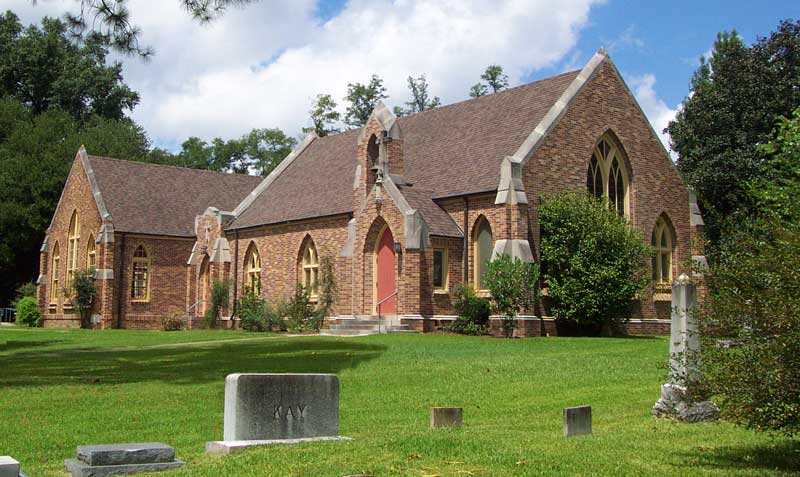 Rev. Sessions’ dream of building a new Gothic church was made possible thanks to two elderly sisters, Matilda Townsend Palmer and Louisa Townsend Palmer who were children at St. Alban’s during the Siege of Vicksburg. Their parents, Samuel and Caroline Townsend were plantation owners and charter members of St. Alban’s in 1857. When the War came to Bovina their home, property and even their lives were destroyed.
Rev. Sessions’ dream of building a new Gothic church was made possible thanks to two elderly sisters, Matilda Townsend Palmer and Louisa Townsend Palmer who were children at St. Alban’s during the Siege of Vicksburg. Their parents, Samuel and Caroline Townsend were plantation owners and charter members of St. Alban’s in 1857. When the War came to Bovina their home, property and even their lives were destroyed.
Caroline and her one-year-old baby died of dysentery during the Siege, leaving Samuel a broken man, mentally and physically. Unable to care for his remaining four children, he sent them to Uncasville, Connecticut, to live with their affluent grandparents. Later in life, Matilda and Louisa married into the Palmer family, one of the most prominent families in the East.
Prior to Matilda’s death in 1927, she informed her son, Townsend Palmer, and her daughter, Natalie Palmer Fabrizio, that she wished to endow St. Alban’s a large sum of money to build a new Gothic church. Matilda passed away before her Will could be executed. Townsend and Natalie fulfilled her wishes by bequeathing a large sum of money to erect the new church in her memory.
The dedication plaque reads: “This church is erected to the GLORY OF GOD in compliance with the wish of Matilda Townsend Palmer, July 2, 1849-July 3, 1927 — the eldest daughter of Samuel Townsend and Caroline Johnson Townsend.” The church was completed in 1928 with Townsend Palmer overseeing the construction. During the time the new church was being built, the old church was altered to complement the architectural style of the New church and to serve as the Parish Hall.
When Louisa Palmer passed away in 1925 her daughter, Virginia Palmer, inherited the family’s vast estate worth millions. When Virginia passed away in 1936 her Will included a $30,000 trust fund to St. Alban’s as a lasting memorial to her mother. The Palmer Trust continues to bless St. Alban’s today.
 Rev. Sessions was grateful to Matilda and Louisa for their devotion to St. Albans. In one of his monthly newsletters he wrote a Sunday stroll after church, enjoying the beautiful grounds: strolling around the spacious grounds and recalling the Townsend and Palmer families for their generous gifts: “After the service the folks did not want to go…so we just roamed around the beautifully kept grove, a setting just as near Paradise as you can possibly get on this earth. My! How we do love St. Alban’s. We know that dear Mrs. Palmer smiled down on us that day. We could not keep from thinking about Mrs. Matilda Townsend Palmer, and Mrs. Louisa Townsend Palmer, Mrs. John Townsend, and Misses Virginia and Theodora Palmer.”
Rev. Sessions was grateful to Matilda and Louisa for their devotion to St. Albans. In one of his monthly newsletters he wrote a Sunday stroll after church, enjoying the beautiful grounds: strolling around the spacious grounds and recalling the Townsend and Palmer families for their generous gifts: “After the service the folks did not want to go…so we just roamed around the beautifully kept grove, a setting just as near Paradise as you can possibly get on this earth. My! How we do love St. Alban’s. We know that dear Mrs. Palmer smiled down on us that day. We could not keep from thinking about Mrs. Matilda Townsend Palmer, and Mrs. Louisa Townsend Palmer, Mrs. John Townsend, and Misses Virginia and Theodora Palmer.”
During Rev. Sessions’ twenty-five-year tenure as rector of St. Alban’s (1919-1944) he guided the new church through the good times and the bad times. Two major challenges came about during his term as rector— the Great Depression (1929-1939) and WWII (1939-1945.) He overcame all obstacles with hope and faith that God would lead the way. In 1944 he retired from the ministry due to failing health and passed away in 1948 at the Episcopal rectory in Bolton. The highlight of his tenure at St. Alban’s was the building of St. Alban’s new and beautiful church—one that held the promise of a bright and new future in the Episcopal Diocese of Mississippi.
St, Alban’s Moves into the 20th and 21st Centuries
— The Year Was —
November 1958 — St. Alban’s Celebrates Centennial
 Excitement was in the air on Sunday November 16, 1958, as throngs of people arrived at St. Alban’s to celebrate the long awaited centennial. Annie Lee Sanders, writer for The Vicksburg Sunday Post, heralded the event with the bold headline: St. Alban’s, Begun in 1858 to Celebrate Centennial: Warren Parish has 100 Years’ Colorful History. The article detailed the history of the church and its struggle to survive: One-hundred years ago, a rural church destined not to survive the changes wrought by time, the ravages of war and the hardships of depressions and sicknesses, came into being. Today that church, the only rural Episcopal Church in Warren County, is planning its centennial celebration—St. Alban’s at Bovina has reached this significant milestone. Its history reflects the will and works of a determined people to worship and to build and then rebuild a place of worship. To celebrate the centennial, all day events were planned including the annual visit of Bishop Duncan Gray Sr. who celebrated the Eucharist before gathering in the grove to enjoy the century old tradition of “Dinner on the Grounds.”
Excitement was in the air on Sunday November 16, 1958, as throngs of people arrived at St. Alban’s to celebrate the long awaited centennial. Annie Lee Sanders, writer for The Vicksburg Sunday Post, heralded the event with the bold headline: St. Alban’s, Begun in 1858 to Celebrate Centennial: Warren Parish has 100 Years’ Colorful History. The article detailed the history of the church and its struggle to survive: One-hundred years ago, a rural church destined not to survive the changes wrought by time, the ravages of war and the hardships of depressions and sicknesses, came into being. Today that church, the only rural Episcopal Church in Warren County, is planning its centennial celebration—St. Alban’s at Bovina has reached this significant milestone. Its history reflects the will and works of a determined people to worship and to build and then rebuild a place of worship. To celebrate the centennial, all day events were planned including the annual visit of Bishop Duncan Gray Sr. who celebrated the Eucharist before gathering in the grove to enjoy the century old tradition of “Dinner on the Grounds.”
June 1967 — Alfred “Chip” Marble Ordained Deacon.
Chip Marble, a cradle Episcopalian and long-time member of St. Alban’s, was ordained deacon at St. Alban’s Church. Bishop John M. Allin was present to celebrate his ordination. One year later he was ordained priest at St. James Church in Jackson.
October 1967 — Sessions Hall Educational Building Consecrated
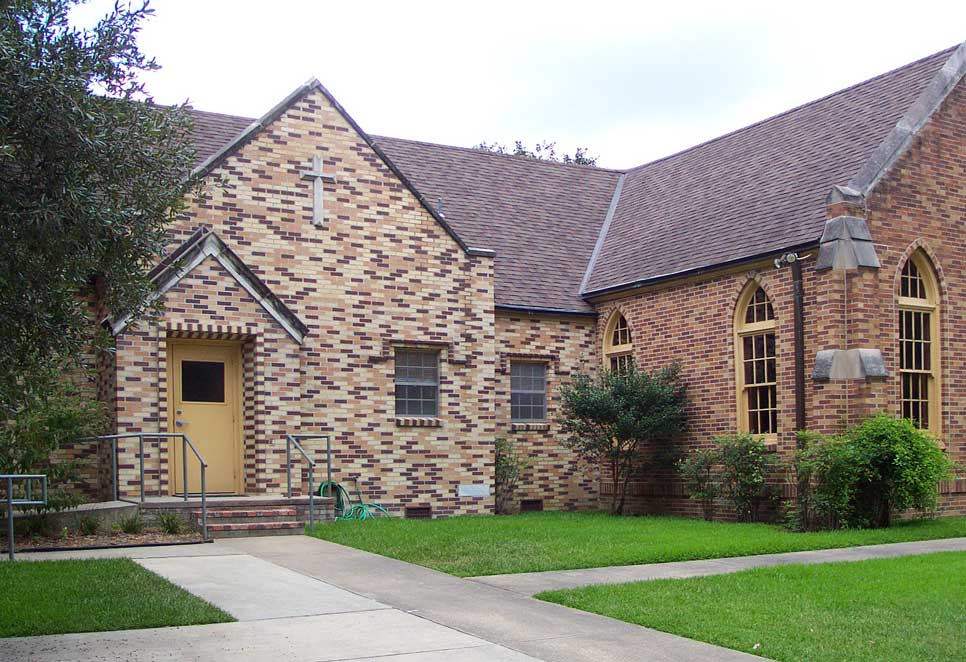 The new annex to the Parish Hall was consecrated by Bishop John M. Allin and dedicated "To The Glory of God and in Loving Memory of Valentine Hunter Sessions." The new addition included a nursery, Sunday school classrooms, rector’s office & bathroom, secretarial office, small kitchen and guest bathrooms. As the church began to ‘grow’ so did the congregation.
The new annex to the Parish Hall was consecrated by Bishop John M. Allin and dedicated "To The Glory of God and in Loving Memory of Valentine Hunter Sessions." The new addition included a nursery, Sunday school classrooms, rector’s office & bathroom, secretarial office, small kitchen and guest bathrooms. As the church began to ‘grow’ so did the congregation.
July 1970 — Victor Bircher, Rector
Rev. Victor Bircher arrived at St. Alban’s in the summer of 1970 after graduating from the University of the South in Sewanee. Rev. Bircher was an ambitious priest who was also a talented organist. During his tenure the youth group was exceedingly active. Since he was a railroad buff he often took the Youth Group to New Orleans on the train. Rev. Bircher served as rector of St. Alban’s for ten years (1980) and was loved by all.
1973 — St. Alban’s Re-instated as Parish Church
St. Alban’s was reinstated as a parish church during the 146th Annual Council of the Diocese of Mississippi. St. Alban’s had become a mission church in 1921 due to the economic hardships following WWI and WWII. Fifty-two years passed before the ‘parish standing’ was reinstated.
 1974 —Scout Troop Established
1974 —Scout Troop Established
Jim Horan, church member, established the Boy Scout troop using the church basement as a meeting room. The group remained active for many years.
October 1976 — Rectory Open House
The rectory was built on the four acres of land purchased by the church as early as 1966. The two-story house featured three bedrooms, a spacious living room with a fireplace, three baths, a kitchen and an office area. After the rectory was built a number of priests have enjoyed the comforts of home.
1977 — Episcopal Women Accepted into the Priesthood

The first women priests to serve at St. Alban’s were: Rev. Ann L. Whitaker (2003-2007), Rev. Billie Abraham (2008-2019) and Rev. Elisabeth Malphurs (2019-present.)
The Episcopal Church began ordaining women priests on January 8, 1977, following a vote by the General Convention to approve the matter on September 15, 1976. Before the official approval, 11 women were ordained in an irregular ceremony on July 29, 1974, in Philadelphia, an event that became known as the "Philadelphia Eleven" and eventually helped crack open the door for women's ordination.
July 1979 — Dedication of Steiner Pipe Organ
Members of St. Alban’s had always dreamed of having a beautiful new pipe organ and Rev. Bircher helped to make that dream come true. After a great deal of research, Rev. Bircher signed a purchase contract with the Steiner Organ Company in Kentucky. The organ was delivered on July 16, 1979 and Dr. John Paul, organist at St. Andrews Cathedral, performed the dedicatory concert.
June 1991 — Alfred ‘Chip’ Marble Consecrated Bishop
 After growing up at St. Albans, Chip Marble was ordained a priest at St. James Episcopal Church in Jackson in 1968. He began his ministry in various cities and towns throughout the diocese. While in Oxford, he served as Chaplain at the University of Mississippi and rector of St. Peter’s Episcopal Church. On June 15, 1991, he was consecrated Bishop Coadjutor to Bishop Duncan M. Gray, Jr. at the Jackson Municipal Auditorium. During the Ordination Service, a special song, “Lord of Life” was sung at his request. “Lord help me to live each day as if it were my last; Help me to reach out and hold fast to life in your sustaining source, to life and your staining grace; for you are the Lord of Life and death has no dominion over me.”
After growing up at St. Albans, Chip Marble was ordained a priest at St. James Episcopal Church in Jackson in 1968. He began his ministry in various cities and towns throughout the diocese. While in Oxford, he served as Chaplain at the University of Mississippi and rector of St. Peter’s Episcopal Church. On June 15, 1991, he was consecrated Bishop Coadjutor to Bishop Duncan M. Gray, Jr. at the Jackson Municipal Auditorium. During the Ordination Service, a special song, “Lord of Life” was sung at his request. “Lord help me to live each day as if it were my last; Help me to reach out and hold fast to life in your sustaining source, to life and your staining grace; for you are the Lord of Life and death has no dominion over me.”
Bishop Marble succeeded as diocesan bishop in 1993 and served in that position for ten years. During his tenure as bishop, he carried with him the thoughts, love, and prayers of his early life at St. Alban’s Church. His story was that of a young boy who grew into priesthood and never faltered, even with the passage of time. After serving as assistant bishop in the Diocese of North Carolina, Bishop Marble retired in 2013 and passed away on March 29, 2017. He is buried in St. Alban’s historic cemetery.
September 2008 — Billie Abraham, Rector
Billie Abraham graduated from Wesley Theological Seminary in DC with a Master of Divinity and from Sewanee Seminary with a Certificate of Anglican Studies. She was ordained priest at St. Alban’s Church on September 21, 2008, with Bishop Duncan M. Gray III celebrant. Over two-hundred people crowded into the nave to witness and be a part of the service. She became the second woman priest to serve St. Alban’s Church. During Rev. Abraham’s tenure, she helped to spearhead the Capital Building Project, a major rebuild of the 1967 annex that included a modern kitchen, guest bathroom, a coffee bar and reception area, and Sunday school classrooms. On April 28, 2019, Rev. Billie preached her final sermon before retiring to her new home in Albuquerque, New Mexico.
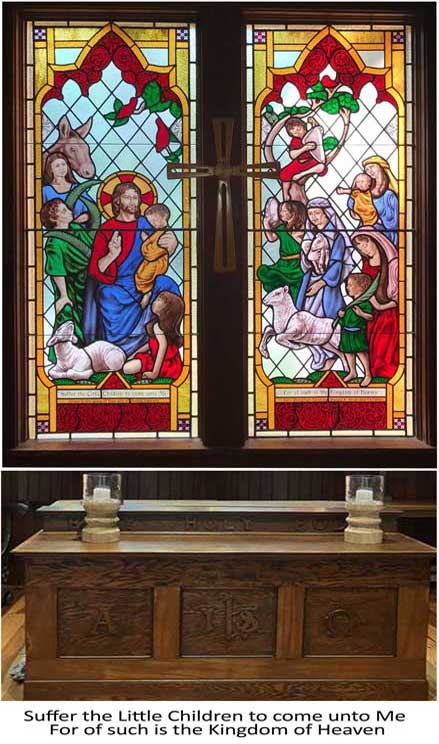
January 2011 — Josie Williams Ordained Deacon
On January 15, Josie Williams, member of St. Alban’s Church, was ordained deacon at St. Andrew’s Cathedral in Jackson. Many of St. Alban’s communicants were present as Bishop Duncan Gray III presided over the ordination. Her first church to serve as deacon was St. Alban’s, her home church, where she was loved by the entire congregation.
March 2016 — Stained Glass Window Dedicated
On Easter Sunday, an exquisite two-panel stained glass window was dedicated to the Glory of God and in loving memory of John Berryman Scott, Sr. The window depicting Jesus Loves the Little Children was given by Margie Ahner Scott and children, Elisabeth Scott Guynes, John Berryman Scott Jr. and Gregory Gale Scott. The window was installed in the chancel of the 1870s church—the space that the St. Paul Memorial Window once occupied before being moved into the new church.
The beautiful hand-carved altar in the parish house was made by Adelbert William “Jack” Price in 1955. Jack was a life-long member of St. Alban’s and a master woodworker. He made the altar for the Sunday school children and smaller services that were held in what was often referred to as the ‘old church.’
November 2019 — Capital Building Project & “Sower of the Seed” Classroom Dedication
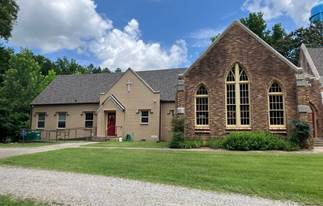 Fifty-two years after the 1967 Sessions Annex was built, Rev. Billie Abraham spearheaded an enlargement and renovation of the Sessions Annex, a construction project known as the “Capital Building Project” The enlarged annex featured new classrooms, an enlarged modern kitchen, a reception area complete with a coffee bar, nursery and more space for Sunday school classrooms. The exterior bricks were painted a solid beige color to blend in with the parish hall. On November 3, 2019, the Sunday school classrooms were dedicated to William F. (Billy) and Carolyn Scott Kitchens for their years of devotion to the children and youth of the church.
Fifty-two years after the 1967 Sessions Annex was built, Rev. Billie Abraham spearheaded an enlargement and renovation of the Sessions Annex, a construction project known as the “Capital Building Project” The enlarged annex featured new classrooms, an enlarged modern kitchen, a reception area complete with a coffee bar, nursery and more space for Sunday school classrooms. The exterior bricks were painted a solid beige color to blend in with the parish hall. On November 3, 2019, the Sunday school classrooms were dedicated to William F. (Billy) and Carolyn Scott Kitchens for their years of devotion to the children and youth of the church.
January 2020 — Elisabeth Malphurs, Rector
Rev. Elisabeth, a native of Jackson, graduated “cum laude” from the Virginia Theological Seminary, Alexandria, Virginia, with a Master of Divinity degree. She also holds a masters degree in Social Work from the University of North Carolina. On Sunday, July 7, 2019, she was ordained transitional deacon at St. Andrews’s Cathedral and began her ministry at St. Alban’s Church. The congregation welcomed her whole heartedly. On Saturday, January 18, 2020 she was ordained priest by Bishop Brian Seage at St. Andrew’s Episcopal Cathedral.
Outdoor Memorials
Remembering the Past—Embracing the Future
Church Grounds — St. Alban’s Church and grounds can only be described as stunningly beautiful; much like a Norman Rockwell painting The 1928 Gothic-styled church and centuries old cemetery, as well as the Memorial Gardens, are located adjacent to the church. An Outdoor Chapel is within view of the church and is often used during the church year for special services - Blessing of the Animals; Burning of the Greens; All Saint’s Eve; Pentecost; Baptisms; Palm Sunday and Sunrise Services. In recent years, four Memorial Benches have been placed around the grounds: three in memory/honor of Frank Wesley Skinner Sr. and Venie McCurdy Skinner and one in memory of Bryan W. Brabston, Jr. St. Alban’s church is now over a century and a half years old and holds the reputation of being one of the oldest and most picturesque churches in the Episcopal Diocese of Mississippi.
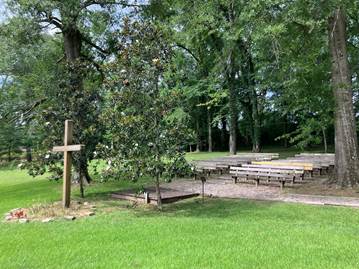
St. Alban’s Outdoor Chapel
The Outdoor Chapel was built as an Eagle Scout Project, Troop 113, led by Matt Kolb and Jaime McKercher, and dedicated to Mrs. Ruth Culp, on October 7, 2001. Ruth Culp was a longtime scout supporter who passed away in 1999. The wooden cross was made by the Wednesday morning Men's Group. The outdoor chapel is often used for various occasions, especially the Blessing of the Animals. Over the years, the Boy Scouts have continued to help with the upkeep, adding backs to the bleachers and installing a slag sidewalk. The outdoor chapel is often used for Holy Baptism, Easter Sunrise, Pentecost, Epiphany and the Burning of the Greens.
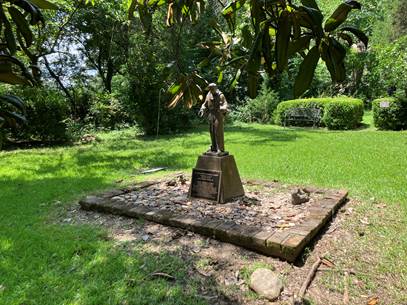
St Alban’s Memorial Garden
The Memorial Garden was dedicated to the Glory of God and in Memory of Harry M.(Bubba) Weissinger, is located just outside the rear entrance to the church. Located in the heart of the garden is St. Francis Pet Memorial Rock Garden dedicated to the Glory of God and in Loving Memory of Frank Wesley Skinner, Jr. The statue of St. Francis of Assisi stands in the midst of the garden where rocks are signed in the memory of beloved pets. Another gift to the garden was a memorial bench dedicated to Bryan Willis Brabston, who passed away in 2019.
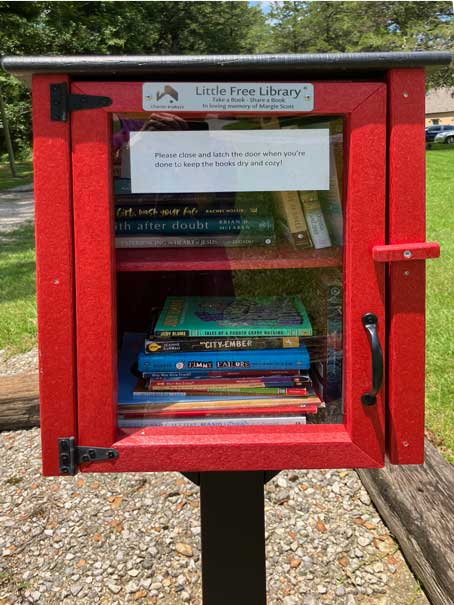
Little Free Library
"Take a Book - Share a Book"
The outdoor Little Free Library "Take a Book -Leave a Book" was donated by Terry and Beth Guynes in loving memory of Margie Scott who passed away at the age of 93. Margie was a life-long member of St. Alban’s Church from the age of five until her death at age 93. She was an avid reader, checking out books from the Vicksburg Public Library and also engaging in St. Alban’s ‘indoor free Library.’ Books were Margie’s best friends.
St. Alban’s Church — 2025
“Go Forth For God”

It was with God’s grace and heavenly guidance that St. Alban’s Church entered into the 21st Century. The church, now over a century and a half years old, remains a place of quiet rest and a place where God’s eternal presence is felt——through prayer, through the reading scripture, through the singing of hymns, through God’s love that binds us together and through the celebration of the Holy Eucharist.
In many ways, St. Alban’s is much the same as it was when the church was first organized in 1857. The early members who envisioned a place of worship were unwavering. They remained true to the faith and even in the face of adversity refused to be downhearted. They were steadfast and persevering – first building and then rebuilding their house of worship, all the while remaining the Body in Christ when there was no house of worship.
Today church members share the common goals of the past, knowing that as a congregation we are the keeper of the dreams and the aspirations of those who will lead the way forward.
James & Rebecca Drake, 2025